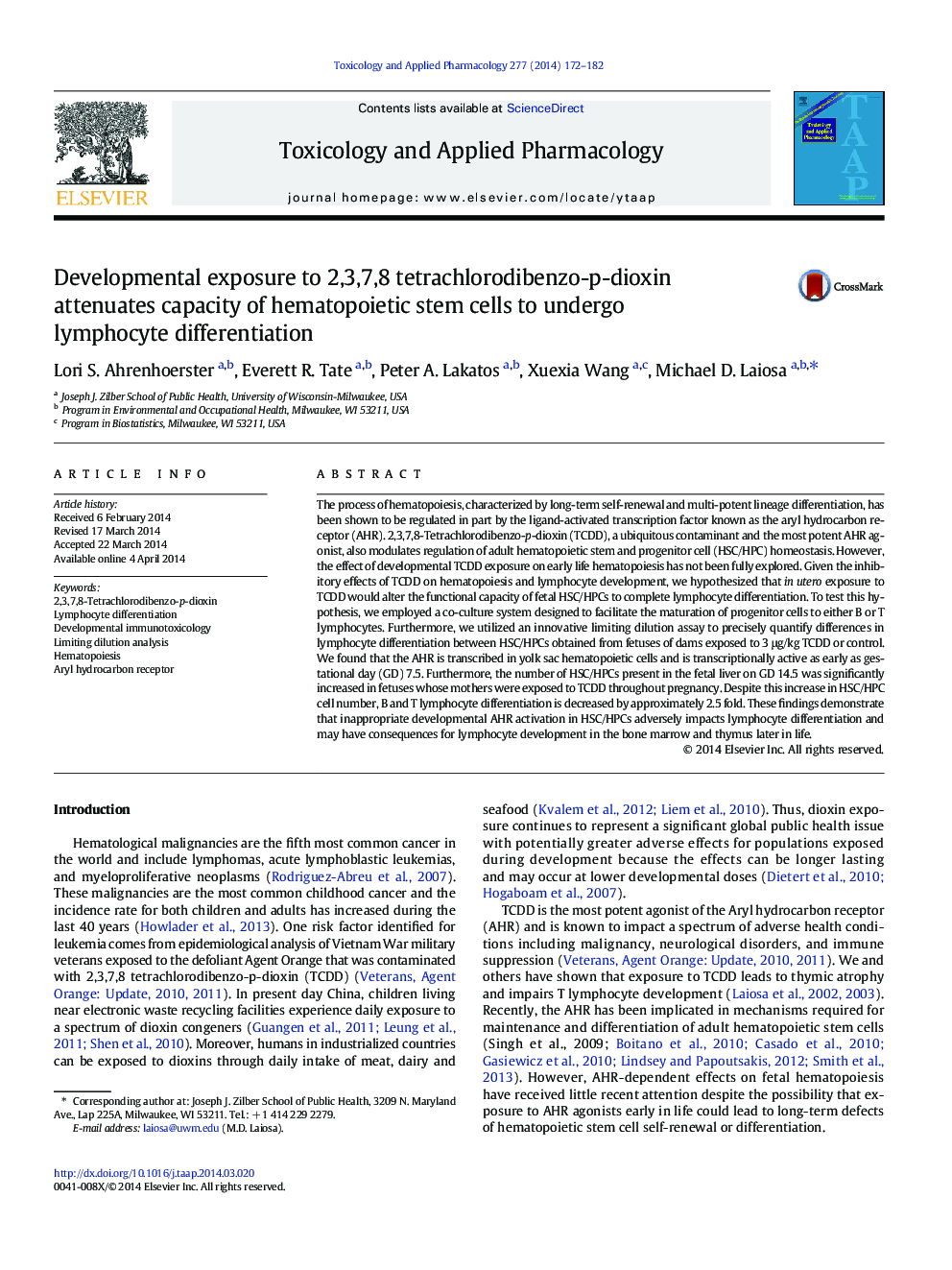| کد مقاله | کد نشریه | سال انتشار | مقاله انگلیسی | نسخه تمام متن |
|---|---|---|---|---|
| 2568536 | 1128464 | 2014 | 11 صفحه PDF | دانلود رایگان |

The process of hematopoiesis, characterized by long-term self-renewal and multi-potent lineage differentiation, has been shown to be regulated in part by the ligand-activated transcription factor known as the aryl hydrocarbon receptor (AHR). 2,3,7,8-Tetrachlorodibenzo-p-dioxin (TCDD), a ubiquitous contaminant and the most potent AHR agonist, also modulates regulation of adult hematopoietic stem and progenitor cell (HSC/HPC) homeostasis. However, the effect of developmental TCDD exposure on early life hematopoiesis has not been fully explored. Given the inhibitory effects of TCDD on hematopoiesis and lymphocyte development, we hypothesized that in utero exposure to TCDD would alter the functional capacity of fetal HSC/HPCs to complete lymphocyte differentiation. To test this hypothesis, we employed a co-culture system designed to facilitate the maturation of progenitor cells to either B or T lymphocytes. Furthermore, we utilized an innovative limiting dilution assay to precisely quantify differences in lymphocyte differentiation between HSC/HPCs obtained from fetuses of dams exposed to 3 μg/kg TCDD or control. We found that the AHR is transcribed in yolk sac hematopoietic cells and is transcriptionally active as early as gestational day (GD) 7.5. Furthermore, the number of HSC/HPCs present in the fetal liver on GD 14.5 was significantly increased in fetuses whose mothers were exposed to TCDD throughout pregnancy. Despite this increase in HSC/HPC cell number, B and T lymphocyte differentiation is decreased by approximately 2.5 fold. These findings demonstrate that inappropriate developmental AHR activation in HSC/HPCs adversely impacts lymphocyte differentiation and may have consequences for lymphocyte development in the bone marrow and thymus later in life.
Journal: Toxicology and Applied Pharmacology - Volume 277, Issue 2, 1 June 2014, Pages 172–182